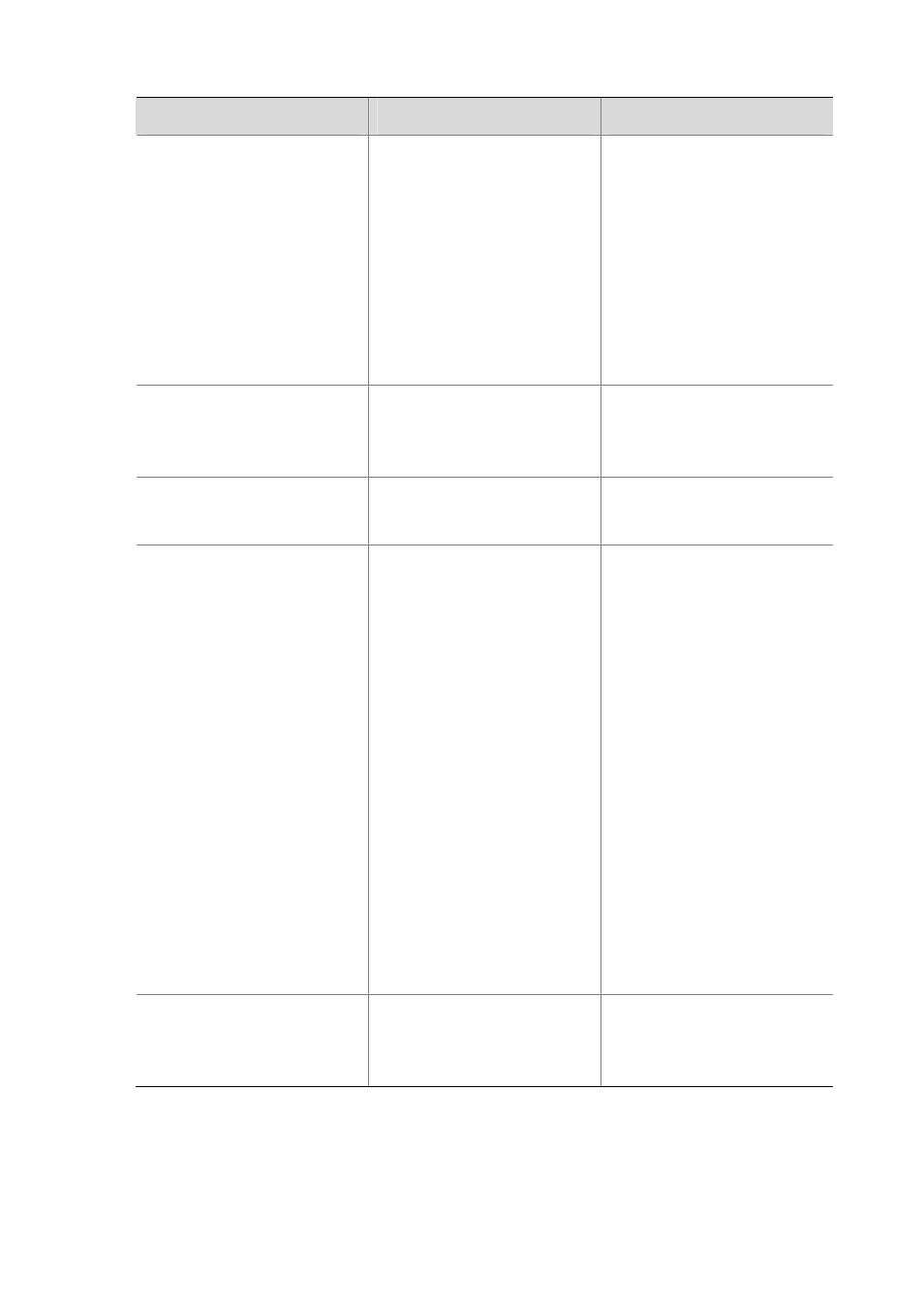H3C Technologies H3C S7500E Series Switches User Manual
Page 20

1-10
To do…
Use the command…
Remarks
Create an IPv4 advanced ACL and
enter its view
acl number acl-number [ name
acl-name ] [ match-order { auto |
config } ]
Required
By default, no ACL exists.
IPv4 advanced ACLs are
numbered in the range 3000 to
3999.
You can use the acl name
acl-name command to enter the
view of an existing named IPv4
ACL.
Configure a description for the
IPv4 advanced ACL
description text
Optional
By default, an IPv4 advanced ACL
has no ACL description.
Set the rule numbering step
step step-value
Optional
5 by default.
Create or edit a rule
rule [ rule-id ] { deny | permit }
protocol [ { established | { ack
ack-value | fin fin-value | psh
psh-value | rst rst-value | syn
syn-value | urg urg-value } * } |
destination { dest-addr
dest-wildcard | any } |
destination-port operator port1
[ port2 ] | dscp dscp | fragment |
icmp-type { icmp-type icmp-code |
icmp-message } | logging |
precedence precedence |
reflective | source { sour-addr
sour-wildcard | any } | source-port
operator port1 [ port2 ] |
time-range time-range-name | tos
tos | vpn-instance
vpn-instance-name ] *
Required
By default, an IPv4 advanced ACL
does not contain any rule.
To create or edit multiple rules,
repeat this step.
Note that if the ACL is to be
referenced by a QoS policy for
traffic classification, the logging ,
reflective and vpn-instance
keywords are not supported and
the operator argument cannot be:
z
neq, if the policy is for the
inbound traffic,
z
gt, lt, neq or range, if the
policy is for the outbound
traffic.
Configure or edit a rule description rule rule-id comment text
Optional
By default, an IPv4 ACL rule has
no rule description.
Note that:
